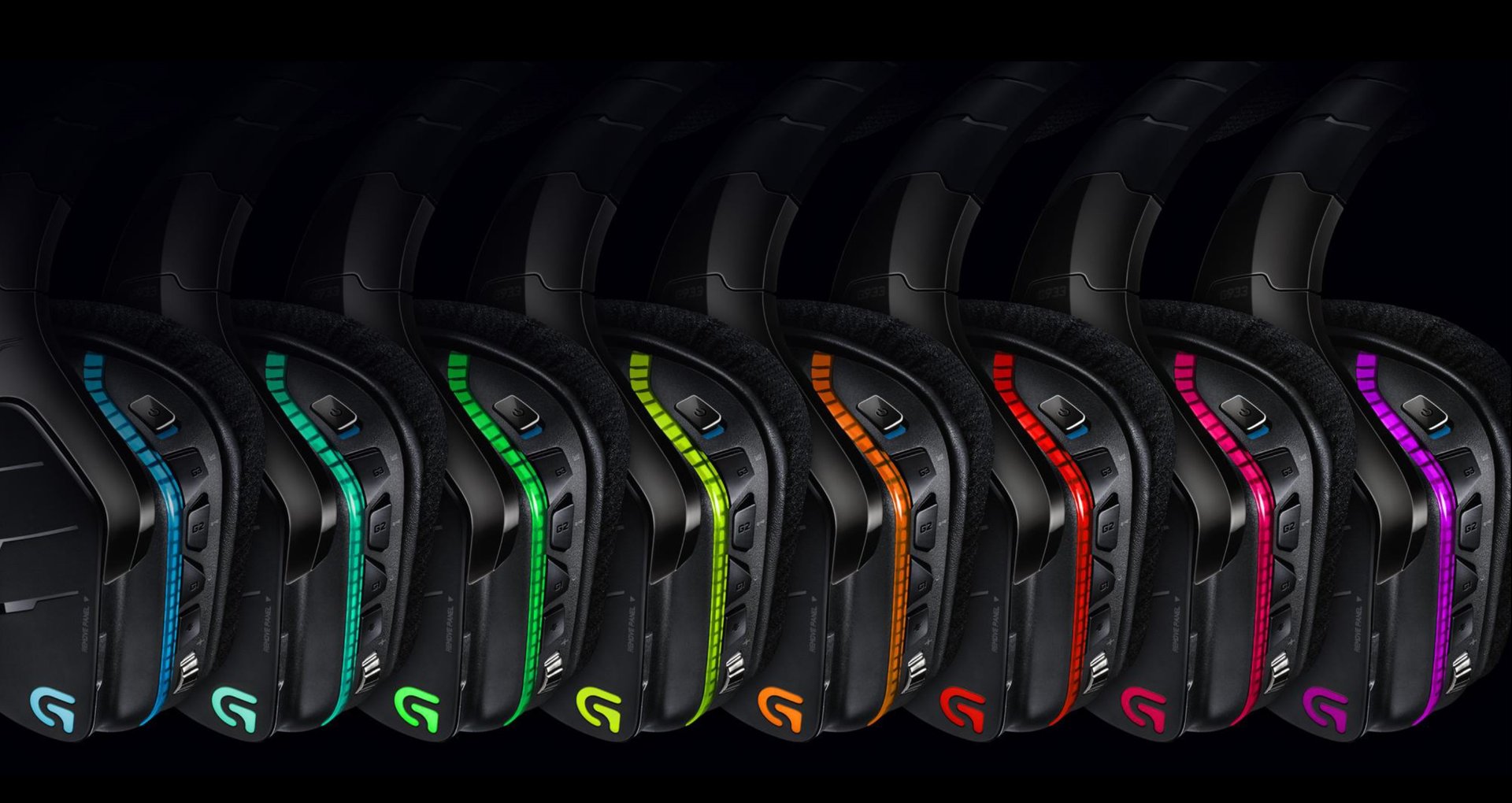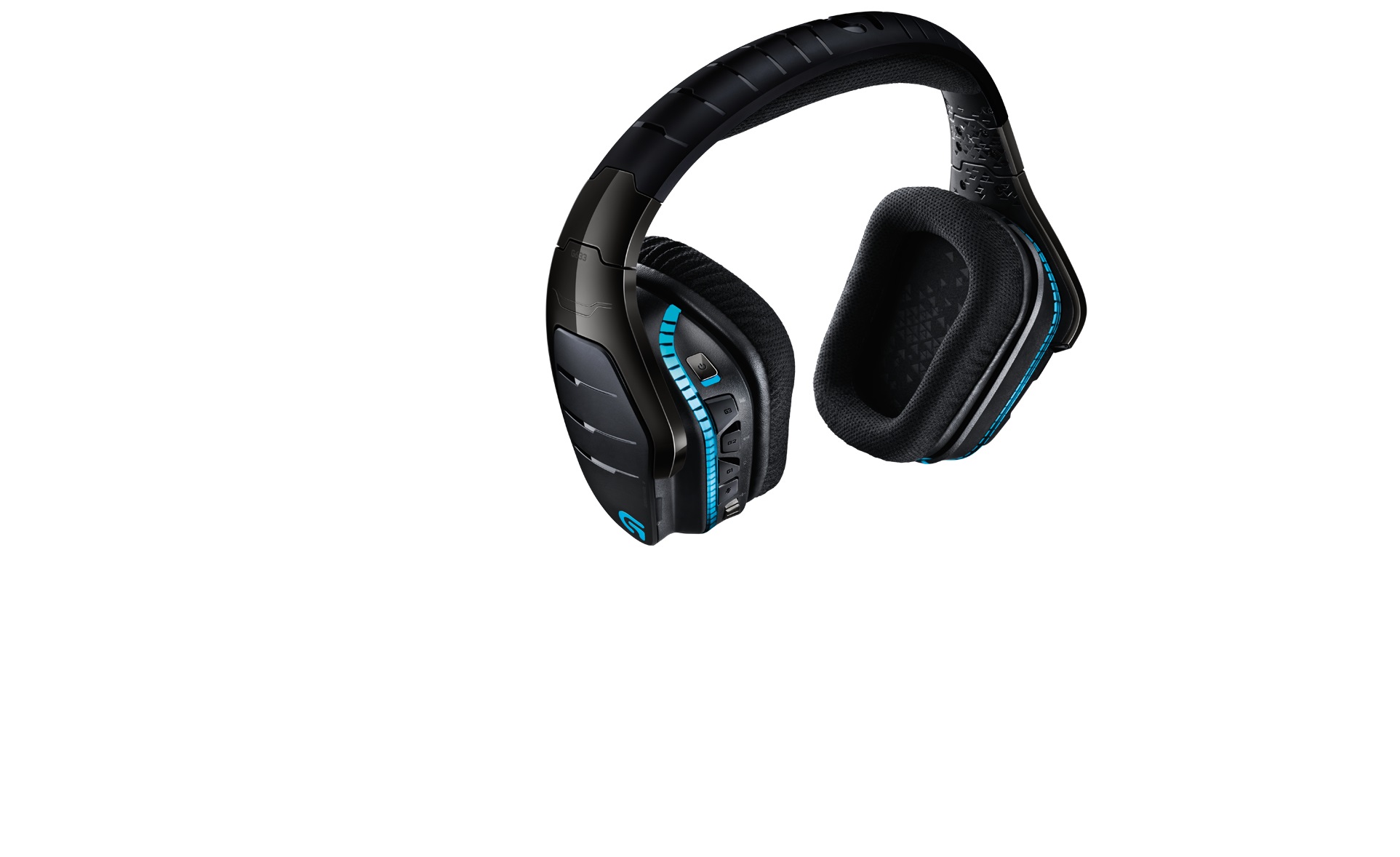Our Verdict
Excellent sound separation, chat audio and surround support are held back by stereo sound directionality and software quirks.
PC Gamer's got your back
Driver: 40 mm
Frequency response: 20Hz-20KHz
Impedance: 39 Ohms (Passive), 5k Ohms (Active)
Size: 190 mm x 180 mm x 94 mm
Weight: 374 grams (13.19 oz)
Sensitivity: 107dB SPL/mW
Microphone Specs
Size: 4 mm
Type: Condenser-Cardioid
Frequency response: 100Hz-20KHz
With the G633 Artemis Spectrum, Logitech attempts to cover all bases by stuffing into it every feature a gamer might want. 7.1 Dolby and DTS Headphone:X surround sound, PC, console, and mobile compatibility with USB and 3.5mm, large ear cups and heavy padding, and flashy RGB lighting effects. They're all there.
The only thing missing is wireless capability; ditching the cables requires an upgrade to the G933.
But as you might expect from a jack of all trades, the G633 doesn’t deliver even performance across the board. Its strengths—excellent sound separation, superb chat quality on PC, and a relatively comfortable fit—are dragged down by inaccurate emulation of speaker placement, unpolished software, and little usefulness as a multiplatform headset. If you spend most of your time in one of the surround-sound modes, you'll mostly notice just the smaller annoyances, but if you plan to use it as stereo headset at any time, all of its flaws will come flying at you.
It's a pity, too, because of how clean the sound is on the G633. Even in stereo mode, details in music and movies that often fade into the background on other headsets are bold and distinct. The audio on the G633 does skew much cooler, though; while bass thumps along quite strongly, it lacks the fullness that you get with much warmer headphones. Still, the overall clarity is so good that I still spent hours playing (and replaying) songs in my music collection that I sometimes skip while plugged in. This headset gets very loud, too, with minimal sound leakage at relatively normal volumes.
But these cans have a strange quirk in stereo mode that makes gaming with them exasperating—audio always seemed to originate from slightly behind me. In most stereo headsets, sound from the drivers hits your ears straight on from either side, unless meant to have a specific position (e.g. in a 3D game, the location of sound can change relative to how your character is facing the sound source.) But on the G633, it's as if someone took the two speakers and dragged them to stand in line with my shoulder blades. Good luck trying to instantly determine enemy positions—someone who's standing in front of you will sound like they're right at your back. I had to consciously think about what you’re hearing and then calculate the actual direction of where to shoot.
In stereo mode, audio seems to originate from slightly behind you.

Looking for advice on which headset to buy? Check out our guide to the best gaming headsets.
This effect was universal on the first unit I tried; on the second headset, it was barely notable in music and movies, but persisted in games. This could be a result of how the earcups fit on my head, but the effect was definitely more pronounced on the first unit. If you’re playing on PC, you’ll likely be playing with surround sound on, so you can sidestep the issue. But if you were planning to get the G633 because they also work with consoles as a passive stereo headset, you’re stuck with this weird effect. These headphones also don't get very loud when using the 3.5mm cable.
Even with surround on, though, the audio experience isn't perfect. Dolby and DTS Headphone:X both sound good, though I preferred the DTS mode. Dolby's effect is far more subtle than on other Dolby headsets I've used, and DTS's punchiness adds some of the warmth that bass lacks in stereo and Dolby modes. DTS also does a slightly better job at rendering the positions of audio sources. It's just too bad that there's currently so little content that supports Headphone:X.
However, neither option gives a sense of wide, expansive space—whether music, movies, or games, audio felt boxed into a surprisingly narrow area. It's not enough to be aggravating, but definitely discernible if you're used to discrete 7.1 or 5.1 setups, or even other surround-sound headsets.
Chat audio is less of a mixed experience, particularly if you're using it exclusively on PC. The boom mic got lavish praise from conversation partners over Google Hangouts and Steam; one person in a Google Hangouts session said I sounded as good as when on a landline phone. And Logitech's implementation of sidetone, which feeds the sound of your voice into your headset, scales well from subtle to loud with virtually no buzzing. The inline mic on the 3.5mm cable works adequately for phone and console party chats, though chat partners all indicated that my voice was very soft and they had to adjust their volume to hear me. Using the boom mic was worse; I could barely be heard.
Given the lower volume of both incoming and outgoing audio over the 3.5mm cable, one of Logitech’s touted features—the ability to run sound through the 3.5mm and USB cables simultaneously—ultimately doesn’t work as well as advertised. You can certainly take calls with a PC game running in the background, but the USB audio overwhelms the 3.5mm audio. The net result is that neither person on a call can hear each other very easily.
The easy fix for such a situation is to silence USB input by using a switch on the G633, but it's somewhat awkwardly placed and difficult to manipulate while wearing the headset. Using the G633's programmable G-keys and mute button is similar; it's usually easier to pull these off your head to fiddle with. Of the physical controls on the G633, the only one that works well during blind use is the volume dial. It's easy to find and makes pleasant beeping noises as you make adjustments.

Navigating the companion software also takes some patience. Though you can easily customize EQ settings, fine-tune options for both Dolby (volume of individual speakers) and DTS Headphone:X (choosing one of two options for sound image positioning), tweak RGB lighting effects, and customize G-key commands, you can’t see changes made by pressing on programmed G-keys if you have the window open but are active elsewhere. You have to switch back to Logitech's software, choose another tab, and then go back to the original tab to see your updates. This can make determining what EQ setting you’ve cycled to or if surround is on difficult unless you mess around with the window.
And in what was hopefully a fluke, the software (version 8.75.30) didn’t play nice at all on the first machine, Windows 7, used for testing. Off the bat, antivirus program Ad-Aware detected part of the installation files as a Trojan and put it into quarantine; even after updates to the program and multiple attempts to reinstall the companion software properly, the G633 never sounded quite the same as on a second machine that was used for the review. The G-keys also didn't function quite right; they only issued commands about 50% of the time when pressed.
With a $150 price tag, the G633's flaws make it a hard sell, even to those who would use it exclusively on PC. However, even though you can do better—the HyperX Cloud is far cheaper and remains our top pick—those seeking a audio experience that doesn't pander to the Beats by Dre crowd may still find it worthwhile to give these a listen. My favorite blues music has never before sounded so appropriately crisp on gaming headphones.
Excellent sound separation, chat audio and surround support are held back by stereo sound directionality and software quirks.


